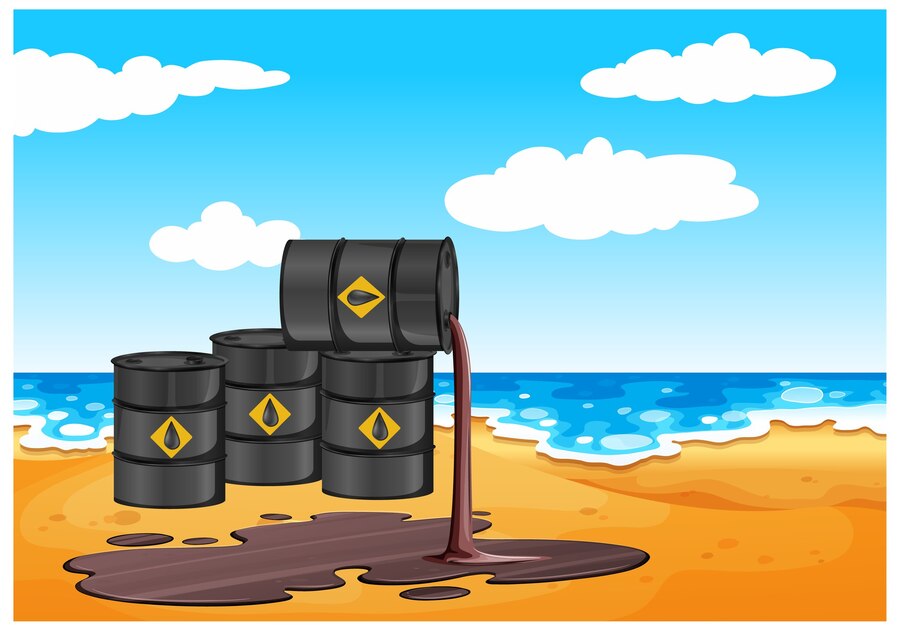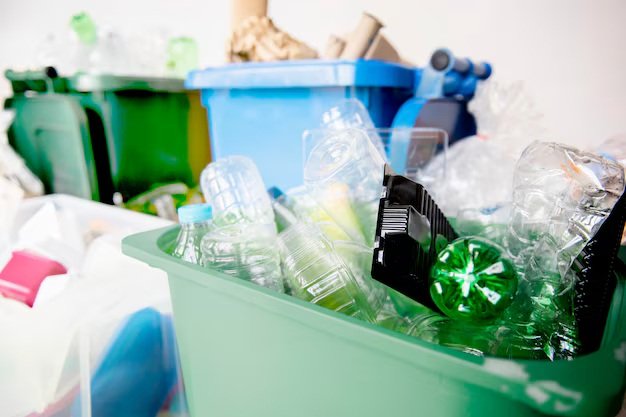How to Dispose of Motor Oil Properly: Protecting the Environment and Saving Resources
Motor oil is like the lifeblood of your car. It keeps your engine running smoothly, but have you ever thought about what happens to it once it’s done its job? If you’ve poured it down the drain or tossed it in the trash, you’re not alone, but it’s worth knowing that used motor oil can do some serious damage to our planet. It’s a major pollutant, capable of contaminating soil and water, which hurts wildlife and even threatens our drinking water.
The good news? You have the power to make a difference. This guide is here to help you understand why proper disposal matters and how easy it can be to take care of used oil responsibly. We’ll explore where motor oil goes after it’s recycled, give you simple steps to handle it safely, and share real stories and expert tips to inspire you.
By the time you finish reading, you’ll know exactly how to dispose of motor oil in a way that’s better for the planet. You’ll also discover cool innovations and solutions that are changing the game for oil management. Let’s dive in and make sure every drop counts!

In This Article
- Understanding Motor Oil: Composition and Lifecycle
- Why Motor Oil Disposal Matters
- The Environmental Impact of Improper Disposal
- How to Properly Dispose of Motor Oil
- Where Not to Dispose of Used Oil: A Simple Guide
- The Bright Side: Sustainable Innovations
- Leaders in Recycling: What We Can Learn
Understanding Motor Oil: Composition and Lifecycle
Motor oil is a blend of base oils and additives that work together to keep things running smoothly. It lubricates all those moving parts, helps cool the engine, and even keeps it clean by trapping dirt and debris. Modern synthetic motor oils take this to the next level, offering extra durability and better performance. But, just like anything else, motor oil doesn’t last forever. Over time, it gets contaminated with things like metal particles, water, and soot from your engine.
Now here’s the good news: used motor oil doesn’t have to go to waste. If you dispose of it the right way, it can be given a new life. That same oil you’ve drained from your car can be re-refined into fresh motor oil, used as fuel in industrial burners, or even turned into asphalt for roads. Recycling isn’t just about saving resources; it’s also about protecting our environment. According to the U.S. Environmental Protection Agency, just one gallon of used motor oil has the potential to contaminate a million gallons of drinking water. That’s why proper disposal is so critical.
Dr. Emily Harper, an environmental scientist, puts it best: “Re-refined oil performs just as well as virgin oil, proving that recycling is not only an environmental imperative but also a viable business solution.” It’s a win-win situation when we recycle used oil. We’re saving resources, protecting ecosystems, and supporting sustainable practices all at once. So, the next time you change your motor oil, think of it as an opportunity to make a difference for the planet. Small steps like this really do add up to something big.
Why Motor Oil Disposal Matters
Have you ever thought about what happens to motor oil after you change it? Most of us don’t give it much thought. It’s easy to pour it out and forget about it, but the reality is that improper disposal of used motor oil can cause serious damage to the environment. This isn’t just a small issue — it’s a massive one.
Here are some eye-opening facts: Every year, about 180 million gallons of motor oil are disposed of improperly in the United States alone. To put that into perspective, just one gallon of used motor oil is enough to contaminate a million gallons of drinking water. Think about that for a second. It’s shocking, isn’t it? Although about 60% of used oil gets recycled globally, there’s still so much room for improvement.
Improper disposal methods, like pouring oil into drains or dumping it on the ground, have dire consequences:
- Soil degradation: Oil seeps into the earth, destroying fertility and harming the natural balance of microbes that plants depend on.
- Water pollution: Toxic chemicals in used oil can infiltrate water supplies, making them unsafe for drinking and harming aquatic life.
- Wildlife harm: When oil runoff reaches rivers, lakes, or oceans, it poisons aquatic ecosystems, often with devastating effects.
Let’s take a real-world example. In 2019, a small town in California turned things around with a “Zero Oil Waste” program. They set up collection points and educated residents on responsible oil disposal. The results? A 70% increase in oil recycling rates and a 50% reduction in cleanup costs for contaminated sites.
By making small changes, they showed how big an impact proper disposal can have. And if they can do it, so can we. Every drop of effort counts.
Learn More: How to Properly Dispose of Fluorescent Tubes
The Environmental Impact of Improper Disposal
Key Statistics on Improper Disposal
| Impact Metric | Value |
|---|---|
| Annual improperly disposed of oil | 180 million gallons (U.S. alone) |
| Water contamination potential | 1 gallon contaminates 1 million gallons |
| Percentage recycled | ~60% (room for improvement globally) |
Improper disposal, such as pouring oil into drains or onto soil, leads to severe consequences:
- Soil degradation: Loss of fertility and microbial health.
- Water pollution: Groundwater and drinking supplies are rendered toxic.
- Wildlife harm: Aquatic ecosystems are poisoned by oil runoff.
Case Study: A Community Transformed by Recycling
In 2019, a small town in California implemented a “Zero Oil Waste” program. By establishing collection points and educating residents, oil recycling rates increased by 70% within two years. The program also reduced cleanup costs for contaminated sites by 50%, showcasing the financial and environmental benefits of proper disposal.
How to Properly Dispose of Motor Oil
Taking care of used motor oil doesn’t have to be complicated or overwhelming. With a bit of preparation and a few simple steps, you can make a big difference for the environment. Here’s a straightforward guide to doing it right.
Step 1: Preparing for the Oil Change
Before you even start draining your car’s oil, set yourself up for success:
- Choose a Clean Workspace: Lay down a tarp or absorbent mat under your vehicle to catch any accidental spills. Keeping things tidy helps prevent mess and environmental damage.
- Gather Your Tools: Have everything ready, including a drip pan to catch the oil, gloves to protect your hands, and a sealable container for storing the used oil later. Trust us, it’s easier when everything is within reach.
- Avoid Contamination: Make sure the container you’ll store the used oil in is clean and hasn’t held other liquids like antifreeze or paint. Mixing other fluids makes the oil impossible to recycle.
Step 2: Draining and Collecting Used Oil
Now it’s time to get your hands dirty — but not the ground!
- Position the Drip Pan: Place it securely under the oil pan plug. A steady hand here can save you from cleanup later.
- Drain Carefully: Slowly unscrew the plug and let the oil flow into the pan. Take your time and avoid splashing; used motor oil isn’t something you want all over your driveway.
- Handle the Oil Filter: After removing the oil filter, tip it upside down and let any leftover oil drain into the pan. Once it’s empty, seal it in a plastic bag so it’s ready for recycling.
Step 3: Storing Used Oil Safely
- Transfer to a Container: Pour the collected oil into a sturdy, leak-proof container, like the one it originally came in. This helps ensure safe transport.
- Label Clearly: Mark the container “Used Oil” so there’s no confusion.
- Store Securely: Keep the container in a cool, dry spot, away from children, pets, and anything flammable.
Step 4: Transporting and Disposing of Oil
The final step is getting your used oil to the right place:
- Locate Recycling Centres: Websites like Earth911 or CalRecycle can help you find nearby recycling points. Many local auto parts stores like AutoZone and O’Reilly Auto Parts will also take it off your hands for free.
- Deliver Responsibly: Make sure the container is sealed tightly to avoid leaks during transport.
- Follow Local Guidelines: Disposal rules can vary by state, so check your area’s requirements to stay compliant.
Where Not to Dispose of Used Oil: A Simple Guide
Storm Drains
If you’ve ever considered pouring old motor oil down a storm drain, stop right there. Storm drains aren’t magical pipes that make waste disappear—they lead directly to rivers, lakes, and oceans. That means any oil you pour in ends up in the very water we drink, swim in, and where fish live. Just one gallon of motor oil can contaminate a million gallons of water. Let that sink in
Trash Cans
Throwing used oil into the trash might seem convenient, but it’s a no-go. Over time, the oil can leak out, creating toxic hazards for landfill workers, nearby soil, and water supplies. Plus, garbage services aren’t equipped to deal with hazardous waste like motor oil. So, think twice before tossing that container in the bin.
The Ground
Dumping oil on the ground might feel harmless, especially if it’s just a little bit. But that oil doesn’t just sit there—it seeps into the soil, ruining its fertility and potentially polluting underground water reserves. Plants can’t grow properly in contaminated soil, and cleaning it up later can cost thousands of dollars. Let’s not go there.
A Real-Life Example
In 2020, a mechanic in Texas was fined $10,000 for dumping used oil into a storm drain. It wasn’t just about the fine—his actions polluted a nearby creek, killing fish and damaging the ecosystem. The cleanup was expensive and time-consuming. Stories like this remind us that what might seem like a shortcut can turn into a nightmare for the environment and your wallet.
Learn More: How to Dispose of Gasoline Properly: Expert Guide and Insights
The Bright Side: Sustainable Innovations
Thankfully, we’re not stuck with the old ways of doing things. Here are some cool new developments in oil management:
Biodegradable Motor Oils
Scientists are working on motor oils made from plant-based materials. These oils break down naturally, reducing harm to the environment if there’s ever a spill. They’re still being perfected, but they’re a promising option for eco-conscious drivers.
Advanced Recycling
New technologies like vacuum distillation can extract more reusable oil from used motor oil, making the recycling process even more efficient. There’s also microbial remediation, which uses tiny organisms to clean up oil contaminants. Science is pretty amazing, isn’t it?
Leaders in Recycling: What We Can Learn
Some countries are nailing oil recycling. Germany recycles an impressive 95% of its used oil, thanks to strict policies and community support. Japan’s advanced techniques produce top-notch re-refined oil, showing how innovation and regulation can go hand in hand. We’ve got a lot to learn from these global leaders.
Simple Steps You Can Take
If you’re in the U.S., know that each state has its own rules about used oil disposal. For example:
- California offers free recycling at certified centres and enforces strict penalties for improper disposal.
- Texas requires oil to be delivered to approved collection points.
- New York makes it mandatory for retailers to accept used oil from customers.
Want to know the rules where you live? The EPA’s website has a handy guide to help you out. Let’s all do our part to protect the environment by keeping used motor oil out of the wrong places.
State-by-State Disposal Guidelines: A Personal Guide
Examples of U.S. Regulations
Here’s a quick snapshot of what some states require when it comes to used motor oil:
| State | Policy Highlights |
|---|---|
| California | Retailers are required to accept used oil from customers. |
| Texas | Oil must be delivered to approved collection points. |
| New York | Retailers required to accept used oil from customers. |
In California, you’re lucky to have plenty of certified recycling centres where you can drop off your used oil for free. But don’t take that for granted – the state has strict penalties if you’re caught dumping oil improperly. In Texas, it’s a bit different. You’ll need to find an approved collection point, but the process is straightforward, and many places will guide you. Meanwhile, New York ensures convenience by requiring retailers who sell motor oil to accept your used oil. This way, there’s always a place nearby.
Voices from the Field: Real Stories
An Auto Mechanic’s Perspective
Meet Javier Lopez, a certified mechanic who’s been in the business for over a decade. He’s seen it all when it comes to oil changes, but one thing he’s passionate about is recycling.
“Recycling used oil is easy once you build the habit. Most shops I’ve worked at prioritize this because it’s good for business and the planet. It’s really a no-brainer when you think about how much cleaner the world could be if everyone did their part.”
Javier’s words remind us that small, consistent actions can make a big difference. Whether you’re a professional or a DIY oil changer, doing it right is worth it.
A DIY Enthusiast’s Journey
Samantha Green, a car enthusiast, learned the importance of proper disposal the hard way.
“At first, I didn’t realize how harmful improper disposal was. Now, I keep a log of my oil changes and always take used oil to a local recycler. It’s my small way of protecting the environment.”
For Samantha, it’s about responsibility and making a difference. She’s turned what was once a chore into a habit she’s proud of, proving that anyone can contribute to a healthier planet.
Actionable Advice for Advocates
If you’re passionate about protecting the environment, there are plenty of ways to take action beyond recycling your own oil:
- Spread Awareness: Share this guide with friends and family. Many people don’t recycle because they simply don’t know how easy it is.
- Volunteer: Join local programs that focus on oil recycling. These initiatives often need people to spread the word or help with the collection.
- Advocate: Push for stronger recycling infrastructure in your community. Write to your local representatives or join campaigns for better policies.
Together, these small steps add up to big change. So, whether you’re Javier in the shop or Samantha in your garage, remember: every drop counts.
Conclusion: Protecting the Environment Starts with You
Proper motor oil disposal is more than an individual responsibility; it’s a collective effort to safeguard our planet. By following the steps outlined in this guide, leveraging innovative solutions, and advocating for stronger policies, you can play a significant role in reducing environmental harm. Together, we can drive toward a cleaner, greener future.







